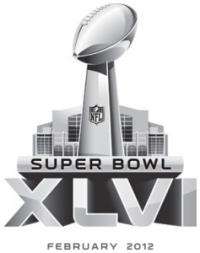Researchers examine influence of Super Bowl ads

(PhysOrg.com) -- Last year, Volkswagen's Super Bowl ad featuring a kid dressed as Darth Vader went viral online, helping the company earn an estimated $100 million in free publicity. This year, the automaker has leaked its new ad -- continuing on the Star Wars theme but adding barking dogs -- in hopes of generating more buzz.
With this kind of exposure at stake, companies are spending as much as $4 million for 30-second TV spots during the Super Bowl, which will be held Feb. 5 in Indianapolis. Media and marketing researchers at SF State say that the influence, price and viewership of Super Bowl ads reveal insights into economic and social trends.
"How do you market to people in a bad economy? That's going to be interesting this time around," said Melissa Camacho, associate professor of broadcast and electronic communication arts.
Super Bowl ads are often seen as an indicator of economic trends. Though ads for beer, snacks and cars are standard fare each year, other industries with large ad presences are likely experiencing a surge. The dot-com boom in the late 1990s saw more technology-focused ads, for example.
"Last year the automotive industry was the big story, with many analysts considering this a signal that the economy was starting to turn around, and sure enough automotive sales in 2011 over 2010 increased 10.3 percent," said Professor of Marketing Kathy O'Donnell, who has followed Super Bowl ads for more than 20 years.
This year, auto ads look to remain popular. One third of all ad space has been sold to auto-related companies and ad spots have sold out much sooner than in previous years, which some say may be an indicator of an improving economy.
Although much economic uncertainty remains, the Super Bowl is the closest thing to a sure bet for advertisers. In the age of Facebook, Hulu, YouTube and DVR, access to mass audiences are much more rare. The Super Bowl is one of the last places where companies can reach millions of potential customers at once. Last year's Super Bowl saw an all-time record in U.S. television viewership, with 111 million people tuning in for the game.
"There are few events that have this kind of unifying power," Camacho said.
Although televised Super Bowls have always drawn large audiences and zealous advertisers, it wasn't until the late 1980s that the ads became a social phenomenon unto themselves, said O'Donnell.
"I think there are many other folks across the country who party with their friends during the actual game and then make everyone quiet down for the commercials," said O'Donnell.
In recent years, other developments have forced advertisers to change their approach.
"One problem with a program that attracts a large and diverse audience is that there's a tendency to try to appeal to everyone, which seldom works," O'Donnell said. "While traditionally targeting men (as most sports advertisers did), we've seen a big push toward women in the past few years, which is smart since they comprised 45.9 percent of the audience for last year's game."
Social media has also changed the game for marketers, for better or worse. Consumers online are quick to share links to videos of their favorite ads -- but the same goes for ads they don't like.
Now, many companies are complementing their advertising efforts with online activity. Doritos and Chevrolet have launched interactive social media campaigns in which consumers submit their own ads to be voted on and aired during the game. The iPhone app Shazam lets users record audio of advertisements, which the app then links to online content.
Despite recent changes, advertisers' number one goal in a spectacle like the Super Bowl is to stand out. Super Bowl ads are often more creative, take more risks, and use celebrity "star power" more than other ads, said Camacho.
"During an event that is so big and has so much going on, you've got to make it memorable," she said.
Provided by San Francisco State University

















